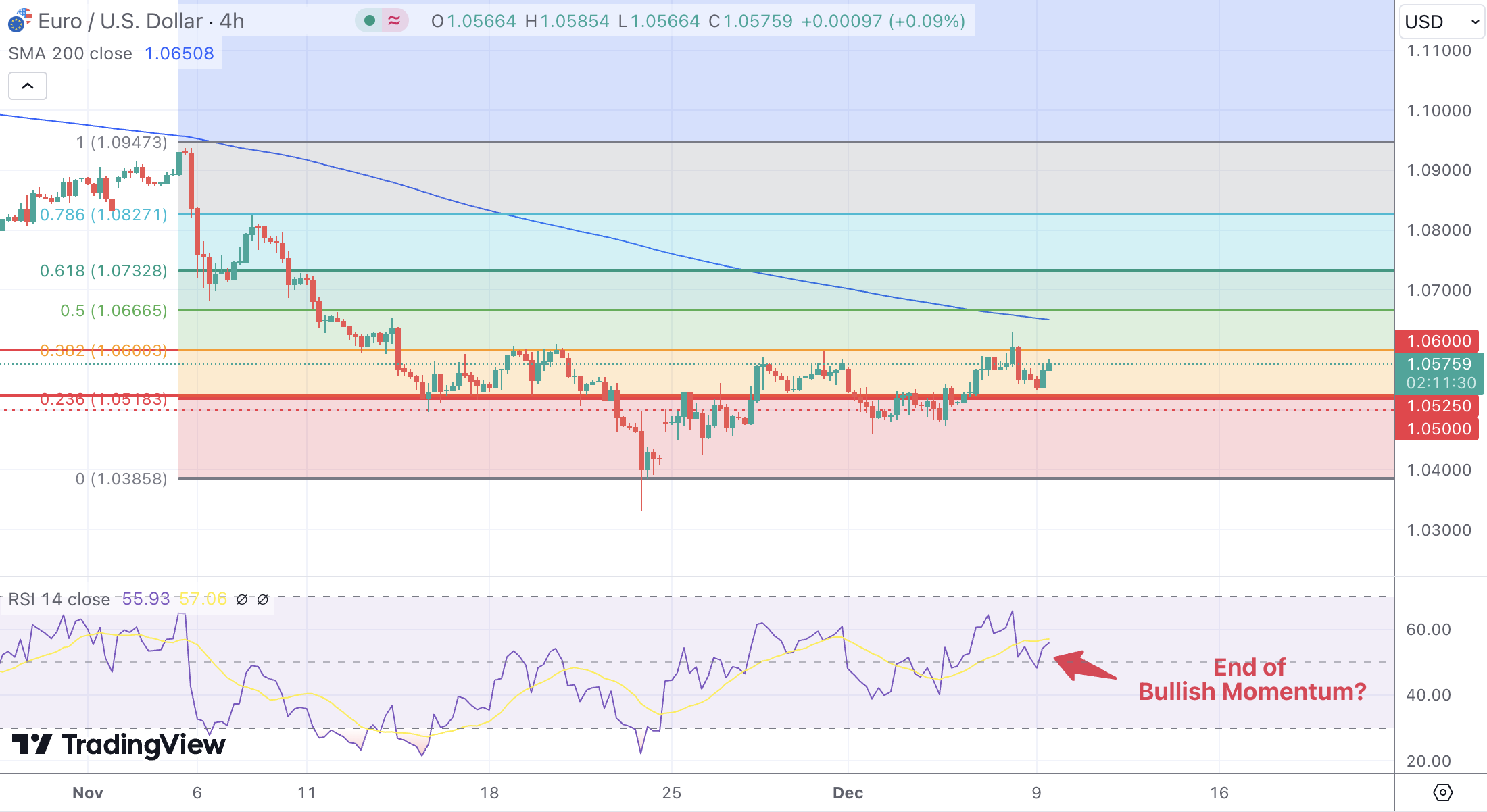Key Takeaways
- EUR/USD faces resistance at 1.0600 and support at 1.0520-1.0530, with 1.0500 as a critical psychological level.
- November U.S. Non-Farm Payrolls exceeded forecasts, but the unemployment rate rose to 4.2%.
- S. CPI data on December 11 could reshape Federal Reserve policy expectations and dollar strength.
- The ECB remains cautious on rate cuts, emphasizing inflation concerns, limiting euro upside.
- S. Dollar Index strength at 106.03 continues to pressure EUR/USD.
Market Dynamics and Recent Performance
As of December 9, 2024, EUR/USD is trading near 1.0550, reflecting a mild negative bias. This movement is partly due to market speculation about potential rate cuts by the European Central Bank (ECB). Investors are also anticipating the upcoming U.S. Consumer Price Index (CPI) report for November, scheduled for release on Wednesday, which could further impact the pair’s direction.
Technical and Fundamental Influences
From a technical perspective, the Relative Strength Index (RSI) on the 4-hour chart has retreated toward 60, indicating that the bullish momentum is waning. Immediate resistance is observed at 1.0600, aligning with the 38.2% Fibonacci retracement level of the recent downtrend. Further resistance levels are identified at 1.0650-1.0660, where the 200-period Simple Moving Average (SMA) and the 50% Fibonacci retracement converge, followed by 1.0730, corresponding to the 61.8% Fibonacci retracement. On the downside, support is seen at 1.0520-1.0530, where the 100-period, 50-period, and 20-period SMAs coincide with the 23.6% Fibonacci retracement, with additional support at the psychological level of 1.0500 and a static level of 1.0440.
Fundamentally, the U.S. labor market has shown resilience, with Non-Farm Payrolls (NFP) increasing by 227,000 in November, surpassing expectations of 218,000. However, the unemployment rate edged up to 4.2%. These figures have bolstered the U.S. Dollar Index (DXY), which rose to 106.03, exerting downward pressure on EUR/USD.
Looking Forward
The forthcoming U.S. CPI data will be pivotal in shaping market expectations regardingve’s monetary policy. A higher-than-expected inflation reading could reinforce the case for maintaining higher interest rates, potentially strengthening the dollar and applying further pressure on EUR/USD. Conversely, a softer inflation figure might lead to a reassessment of rate hike expectations, offering some relief to the euro.
In Europe, the ECB’s stance remains a focal point. Recent comments from ECB policymakers suggest a cautious approach toward rate cuts, emphasizing that it’s premature to discuss such measures while inflation remains elevated. This cautious outlook may limit the euro’s upside potential in the near term.


